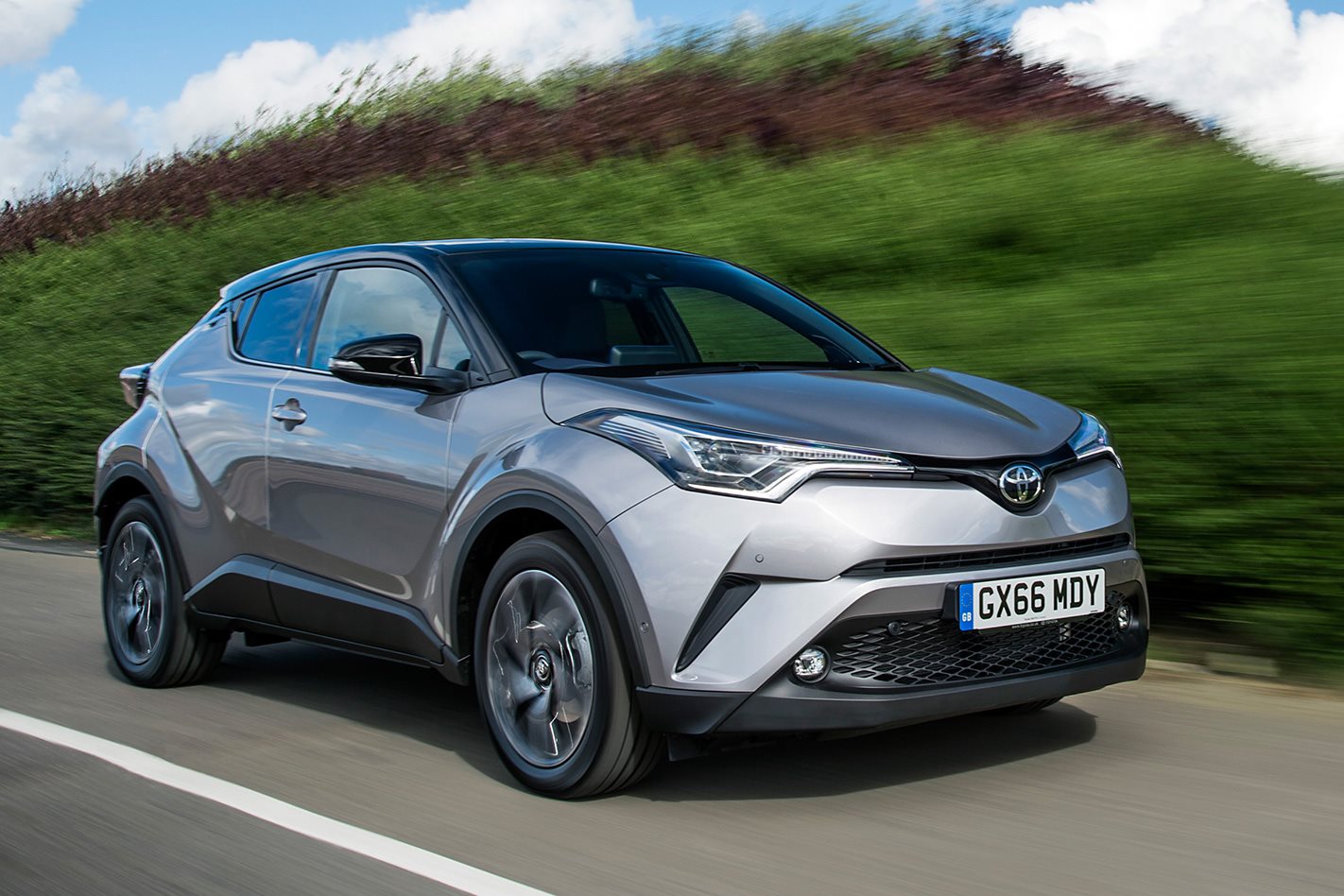Toyota’s long-awaited compact SUV has arrived, offering cutting-edge design that’s, well, so un-Toyota.
WHAT IS IT Toyota’s excitement quota for several years. The new Toyota C-HR is every bit as radical as most of the company’s offerings are conservative, and although it’s primarily designed to appeal to European buyers falling out of love with conventional hatchbacks it, will goon sale in Australia in February. Only one powerplant will make it here, an 85kW 1.2-litre turbocharged four-cylinder, which will be offered as a front-drive manual, a front-drive CVT, or an all-wheel-drive CVT.
WHY ARE WE TESTING IT? To see if the world is ready for such a radical-looking Toyota. The C-HR does a better job than most when it comes to combining the once-contradictory design themes of crossover and coupe. Underneath it sits on the same next-generation GA-C platform as under the new Toyota Prius, and which will go onto underpin almost all of Toyota’s mid-sized models. The Nissan Qashqai has proved that crossovers can become mainstream models rather than niche players, and Toyota dearly hopes to enjoy similar success.
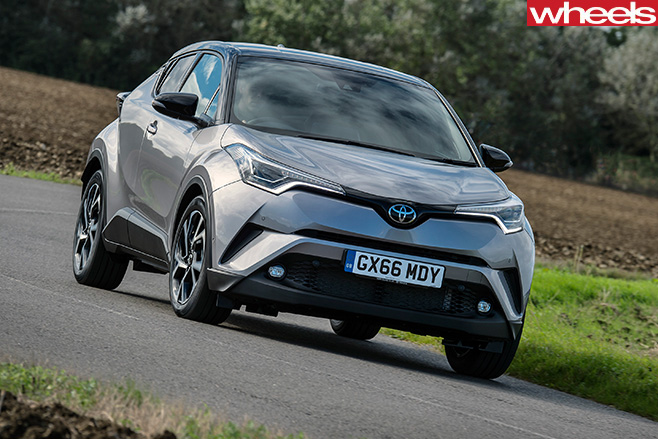
THE WHEELS VERDICT We’ll fully understand if the C-HR isn’t your thing; it’s probably the most daring thing that Toyota has launched in living memory. Under the radical styling lies an impressively competent alternative to a mainstream hatchback, and one that won’t require buyers to make too many compromises. The 1.2 turbo can’t deliver a huge amount of performance, and the handling doesn’t quite live up to the promises made by the design, but overall it’s a welcome new direction for the brand.
PLUS: Advanced style; decent boot; competent ride and handling; useable interior space MINUS: Interior smacks of conservatism; closed-in rear seats; drive lacks sense of fun suggested by design
THE WHEELS REVIEW WE SHOULDN’T see the new Toyota C-HR as just a car. It’s also an apology, recognition from Toyota that it’s been trying to sell some very dull mid-sized cars in parts of the world that are no longer interested in them. As such gestures tend to be, it’s close to being over-blown, try-too-hard; yet if you’re prepared to accept something so visually radical wearing a Toyota badge the result is pretty impressive.
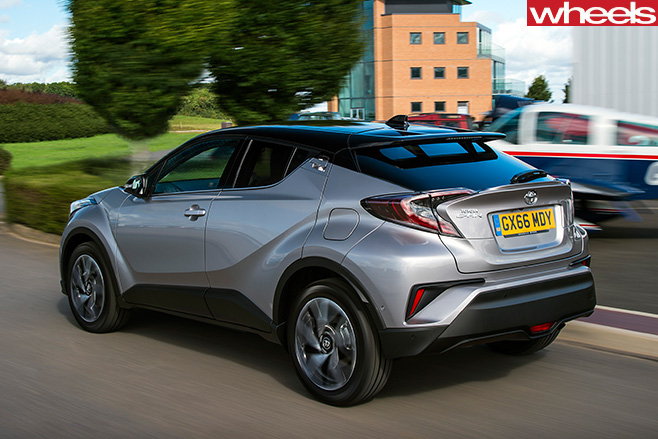
The C-HR sits on the same GA-C platform that underpins the Prius and was designed for Europe, where Toyota’s dealers have struggled to shift the Corolla-twin Auris for years. Response from other markets to the project was positive enough to see it given wider distribution, with Australian sales set to start in February.
Our cars will be built in Japan and will come exclusively with a 85kW 1.2-litre turbocharged petrol engine; other markets will have the option of a hybrid using the Prius’s running gear or – in parts of Eastern Europe and the U.S. – a 2.0-litre atmo donk.
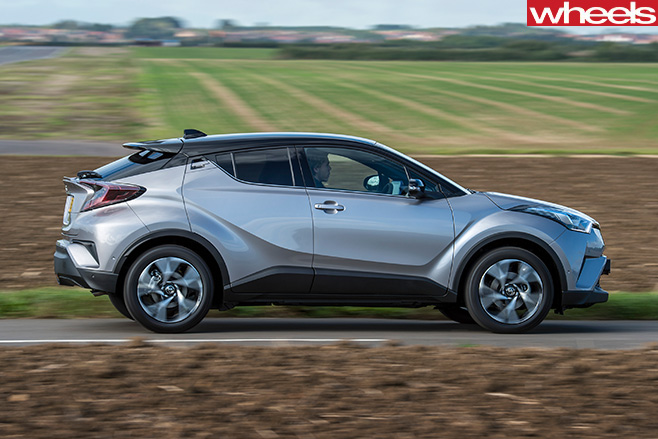
In design terms coupe and SUV are never going to be easily combined, but the Toyota pulls it off about as successfully as it’s possible, and with far more grace than the vastly more expensive Mercedes GLE Concept.
Things aren’t much less radical inside the cabin. There’s still some familiar Toyota switchgear – and the separate LED digital clock that the company has put in everything it has built for the last three decades – but everything else is swoopy and sleek, with a diamond theme that carries from the shape of the HVAC buttons to the door cards and even the headlining. Materials mostly feel reassuringly expensive, although wandering fingers can find some lower-rent plastics lower down.
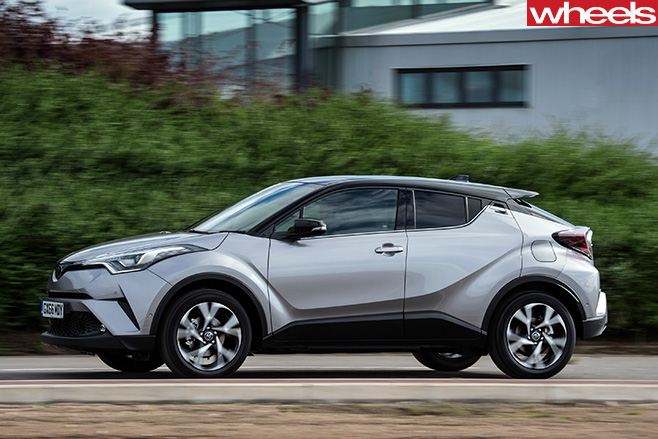
The 1.2-litre turbo is new to Australia and, for the most part, impresses. Like most small capacity turbo petrols it is tuned to deliver a convincing diesel impression, churning out its peak 185Nm on a flat plateau from 1500rpm to 4000rpm and revving out at just 5600rpm. It feels tight at the top end but works happily in its brawny mid-range, which delivers enough shove for a respectable real-world pace.
The basic front-wheel-drive version will come with either a six-speed manual (with rev-matching on downchanges) or a CVT, with the more expensive all-paw version being CVT only. As tends to be the case this works well under low intensity use, keeping the engine around the 2000rpm mark where it’s happiest, but requests for get-me-out-of-here acceleration come at the expense of the engine putting on a convincing impression of a food blender. At least, unlike many modern systems, it doesn’t pretend to have gears when left in “Drive”, although the virtual ratios accessed by sliding the selector into its manual mode are every bit as slurry.
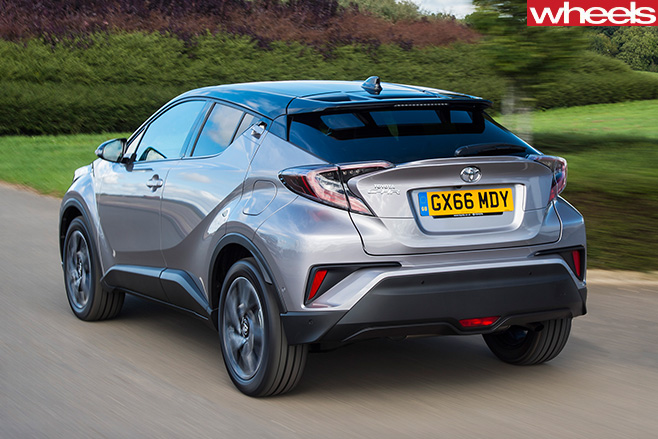
Project leader Hiruyuki Koba is a keen racer – happily showing journos an in-car video of a big spin at Suzuka as he fought for the lead in a recent race – and says he fought hard to be allowed to partially develop the C-HR on the Nurburgring Nordschliefe in Germany. Indeed, he drove a prototype version with a tuned 120kW engine in a four-hour race there earlier this year.
The C-HR has certainly been able to exploit the extra torsional rigidity of the GA-C platform, with well-chosen spring and damper settings allowing it to feel both taut and pliant when digesting a three-dimensional road at speed. Steering is less impressive – direct and proportional, but with little more than a digital impression of feel reaching the helm. Try too hard in a slower turn and it understeers, but not excessively so, and although it will tighten its line on an eased throttle it does so without the sense of fun you’d expect from a true hot hatch.
But then, the C-HR does cover a lot of bases and on-the-limit handling is probably unlikely to be at the top of the wishlist of too many potential buyers. We’re promised that Australian specification will be generous, with autonomous emergency braking, adaptive cruise, automatic high beam, a reversing camera and lane departure warning coming as standard on the circa $26,000 entry model, with a higher-speced C-HR “Koba” – named after the car’s engineering father – getting 18-inch alloys, part-leather seats and keyless entry.
We’ll have to wait longer for pricing details, with Toyota predicting it will slot behind the Toyota RAV4’s 15,000 units in terms of sales volumes.
With details of the new BMW joint venture that will lead to the Supra set to drop soon, let’s hope Toyota hasn’t used all its quota of excitement in this one model.
SPECS Model: Toyota C-HR Kobu Multidrive S Engine: 1197cc 4cyl, dohc, 16v, turbocharged Max power: 85kW @ 5200rpm Max torque: 185Nm @ 1500rpm – 4000rpm Transmission: CVT, all-wheel drive Weight: 1510kg 0-100km/h: 11.4 sec (claimed) Fuel economy: 6.3L/100km (est) Price: $35,000 (est) On sale: February 2017

